What is the purpose of letting the fabric sit for a period of time after dying it before washing? What is the scientific explanation for this step?
Name: Jenny
—ADVERTISEMENTS—
Books about the chemistry of dyeing
Wool Dyeing
Edited by David M. Lewis, 1992.
Highly technical and thorough, this book explains all aspects of wool dyeing in a manner understandable by textile professionals and advanced science students.
Victor B. Ivanov's

Reactive Dyes in Biology and Medicine
Explains use of reactive dyes for staining proteins or carbohydrates
Heinrich Zollinger
Color Chemistry: Synthesis, Properties, and Applications of Organic Dyes and Pigments
John Shore's
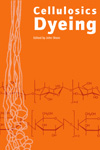
Cellulosies Dyeing
Useful information about the chemistry of reactive dyes, and other dye types used for cotton and other plant fibers
Country or region: U.S.
Message: Hi,
I am writing a research paper on the chemistry of dyeing and I want to know what is the purpose of letting the fabric sit for a period of time after dying it before washing. What is the scientific explanation for this step? could you give me a source in which I could find out more about the chemistry involved with dyeing?
Reactions of various reactive dyes
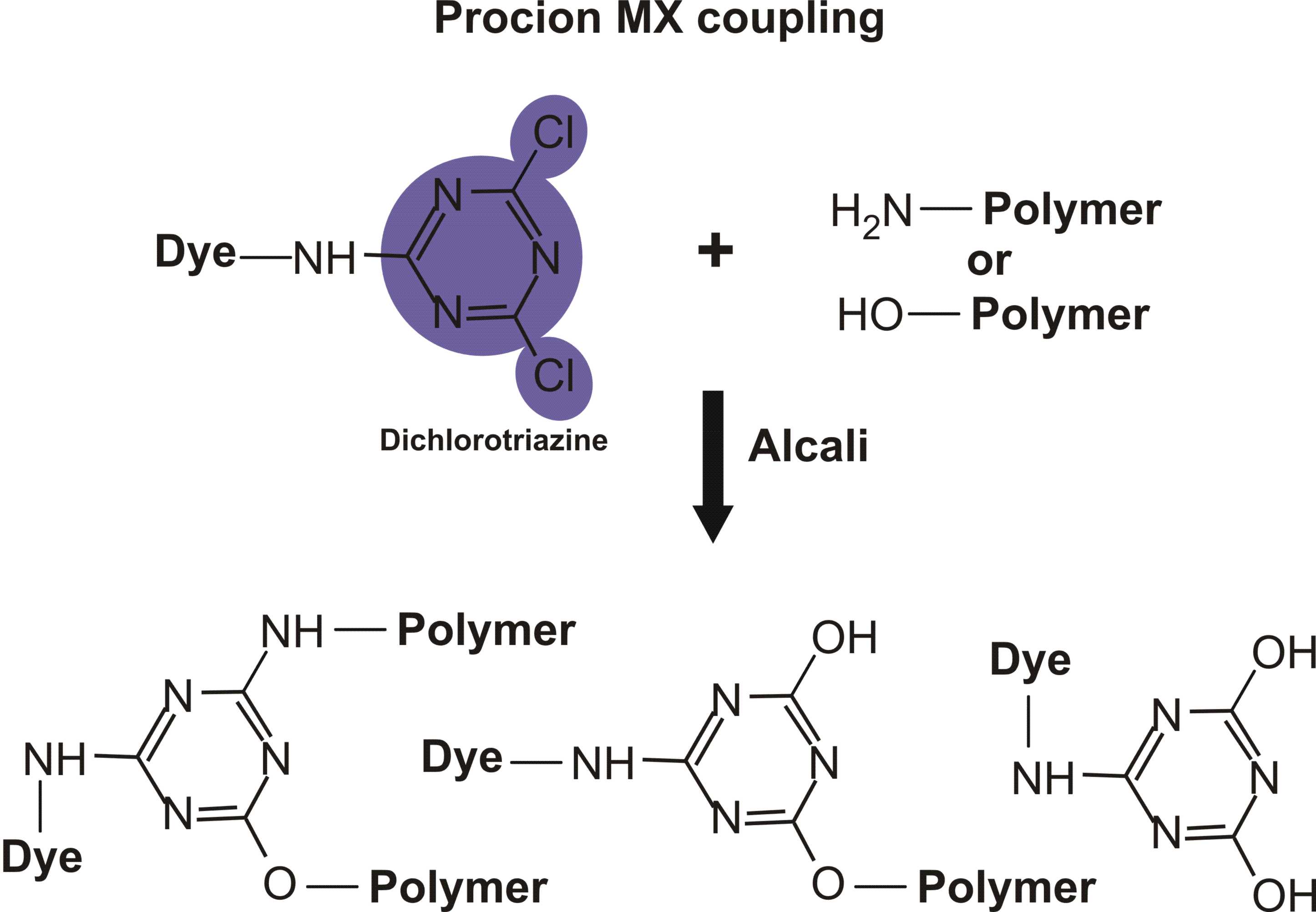
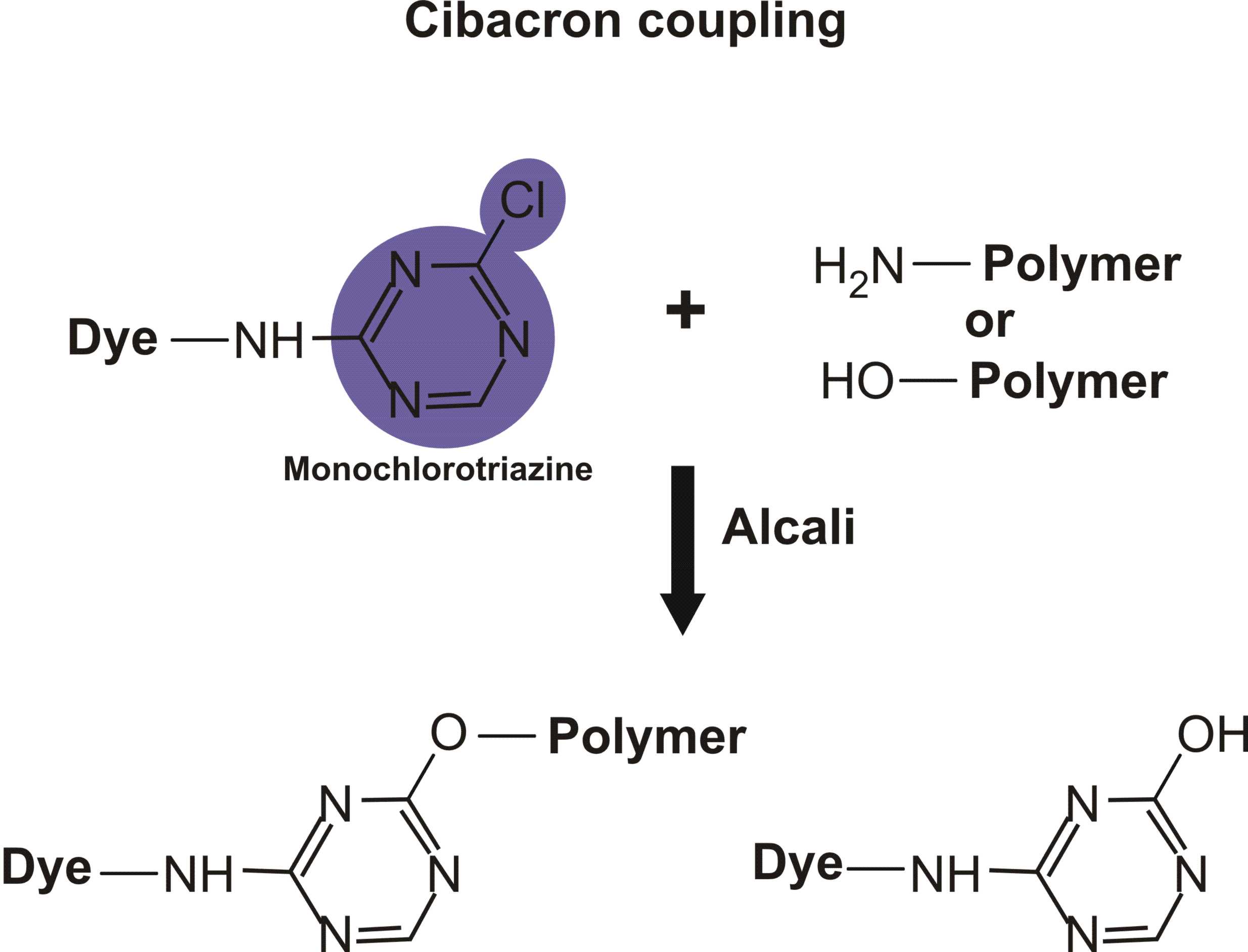
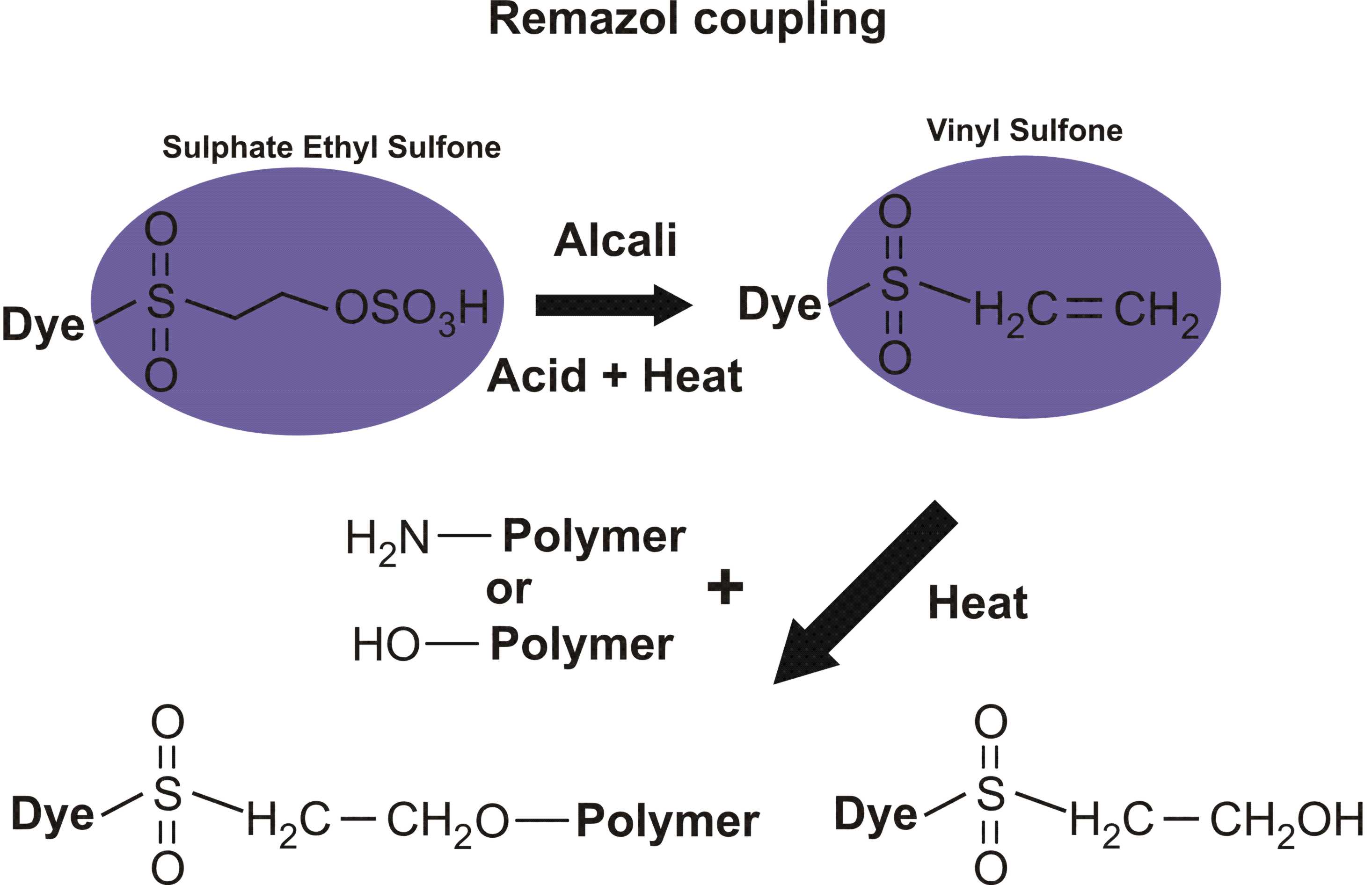



Structures of various reactive dyes
(chromophore is shown on the left side, reactive group on the right)
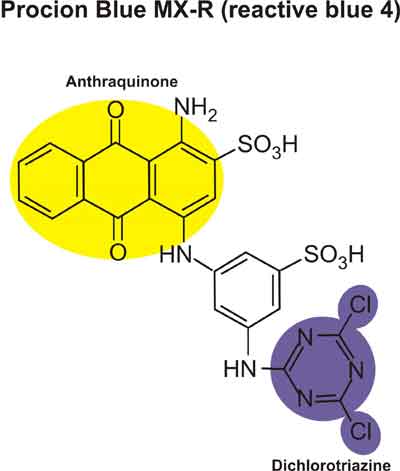
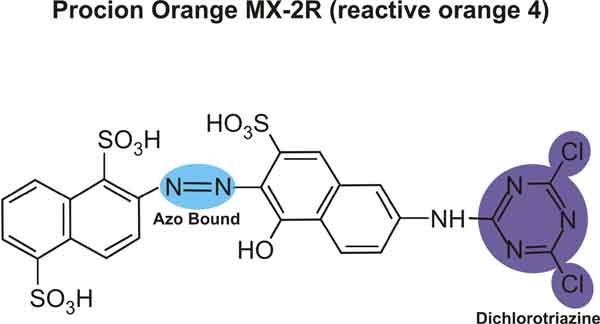
 (The illustrations shown above, with the chromophore shown in yellow or blue and the reactive group shown in violet, were drawn by Dr. Francois Denis, who kindly gave permission for me to use them for educational purposes.)
(The illustrations shown above, with the chromophore shown in yellow or blue and the reactive group shown in violet, were drawn by Dr. Francois Denis, who kindly gave permission for me to use them for educational purposes.)
(chromophore is shown on the left side, reactive group on the right)


 (The illustrations shown above, with the chromophore shown in yellow or blue and the reactive group shown in violet, were drawn by Dr. Francois Denis, who kindly gave permission for me to use them for educational purposes.)
(The illustrations shown above, with the chromophore shown in yellow or blue and the reactive group shown in violet, were drawn by Dr. Francois Denis, who kindly gave permission for me to use them for educational purposes.)It's different for different classes of dye, but the time during which the fabric is allowed to sit with the dye is the reaction time. For fiber reactive dyes, such as Procion MX dyes, a covalent bond is formed between the dye molecule and the textile molecule. Depending on temperature, dye concentration, and other factors, it can take some time for all of the dye molecules to react with the textile fiber molecules. While high-water-ratio immersion dyeing is generally complete within one hour, direct dye application methods such as dye painting or tie-dyeing can require several hours or even up to two days for the last of the dye molecules to react. Some of the dye molecules will react immediately, some will take longer, and some of the dye molecules will take longer still.
What's happening is that the dye molecules are bumbling around in solution waiting to get close enough to an activated textile fiber molecule (a cellulose fiber is activated by a high pH, forming a cellulosic anion). The dye molecule and the fiber generally both have negative electrical charges, which makes them inclined to repel each other. Heat increases the speed with which the molecules tumble around, increasing the rate at which they may encounter a suitable partner in order to undergo the reaction.
This reaction time period after applying the dye and any auxiliary chemicals is often referred to as "batching", referring to the batchwise dyeing of fabric as compared to continuous dyeing processes. Obviously, washing out the unattached dye before all of it has had time to react will result in much wasted dye, and unintentionally pale colors. Washing out dye before it has completed reacting can also cause backstaining, as reactive dye in the rinse water can transfer to unwanted sections of a design; waiting until all dye has reacted, either with the fiber or with the water, means than any backstaining lacks permanent chemical bonds and can be washed out with sufficiently hot water, an impossibility when backstaining is due to still-reactive dyes.
For more information on the chemistry of dyeing, please see the following pages on my website:
Also see the following books:
- David G Duff and Roy S Sinclair: Giles's Laboratory Course in Dyeing, Fourth Edition (1989). ISBN 0 901956 49 X. (This is the best of these books for a beginner to start with.)
- John Shore (ed): Cellulosics Dyeing (1995). ISBN 0 901956 68 6. (Lots of great information, including drawings of reaction mechanisms.)
- Alan Johnson (ed): The Theory of Coloration of Textiles, Second Edition (1989, 1995). ISBN 0-901956 48 1. (This book can be awfully hard going, but really gets into the details.)
- Victor B. Ivanov: Reactive Dyes in Biology. (Originally published 1982; English translation 1987.) Harwood Academic Publishers. ISBN 3-7186-0235-0.
- David R. Waring and Geoffrey Hallas (editors): The Chemistry and Application of Dyes (1990). ISBN 0306432781.
Note that, if your local public library does not have these books, they can get them for you for free via the Interlibrary Loan program, if you are able to wait a few weeks.
(Please help support this web site. Thank you.)
(Please help support this web site. Thank you.)
Posted: Monday - May 21, 2012 at 07:12 AM
Follow this blog on twitter here.
Quick Links
- All About Dyes & Dyeing Top -
- Top of this blog -
- FAQ -
- The Dye Forum -
- How to Tie Dye - How to Batik -
- Books - Toys - Plants -
- Top of this blog -
- FAQ -
- The Dye Forum -
- How to Tie Dye - How to Batik -
- Books - Toys - Plants -
More in this category:
- -
Statistics
Total entries in this blog:
Total entries in this category:
Published On: Aug 29, 2012 02:49 PM
Total entries in this category:
Published On: Aug 29, 2012 02:49 PM
